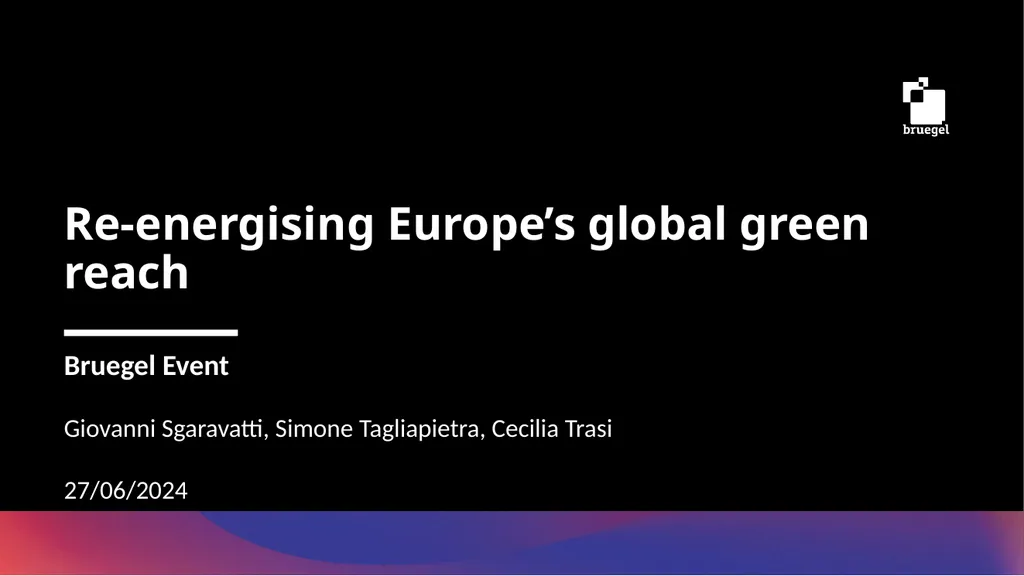
Author : faustina-dinatale | Published Date : 2025-05-24
Description: Re-energising Europes global green reach Bruegel Event Giovanni Sgaravatti, Simone Tagliapietra, Cecilia Trasi 27062024 Agenda Why the EU needs a clear global reach strategy Shifting drivers of EU green external action The currentDownload Presentation The PPT/PDF document "" is the property of its rightful owner. Permission is granted to download and print the materials on this website for personal, non-commercial use only, and to display it on your personal computer provided you do not modify the materials and that you retain all copyright notices contained in the materials. By downloading content from our website, you accept the terms of this agreement.
Here is the link to download the presentation.
"Re-energising Europe’s global green reach Bruegel"The content belongs to its owner. You may download and print it for personal use, without modification, and keep all copyright notices. By downloading, you agree to these terms.













